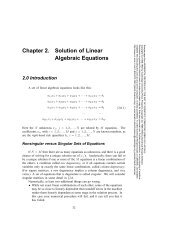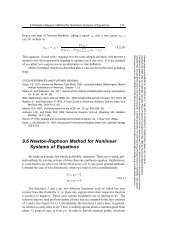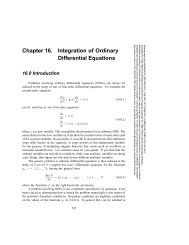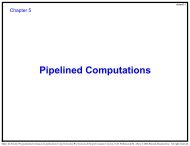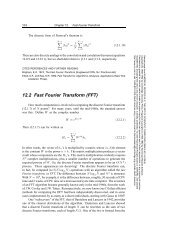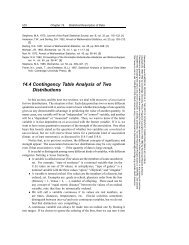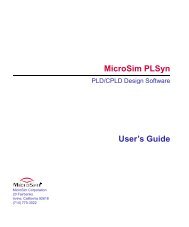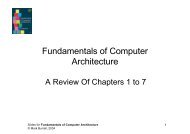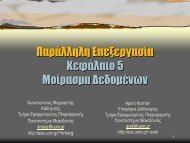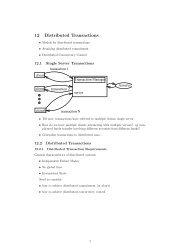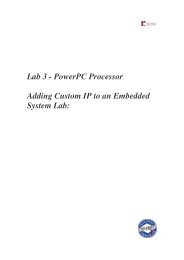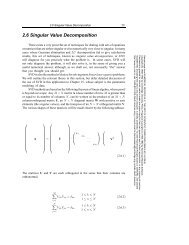ARM710T processor
ARM710T processor
ARM710T processor
You also want an ePaper? Increase the reach of your titles
YUMPU automatically turns print PDFs into web optimized ePapers that Google loves.
3.3 Instruction Length, Data Types, and Operating Modes<br />
3.3.1 Instruction length<br />
Instructions are either 32 bits long (in ARM state) or 16 bits long (in THUMB state).<br />
3.3.2 Data types<br />
<strong>ARM710T</strong> supports byte (8-bit), halfword (16-bit) and word (32-bit) data types. Words<br />
must be aligned to 4-byte boundaries and half words to 2-byte boundaries.<br />
3.3.3 Operating modes<br />
<strong>ARM710T</strong> supports seven modes of operation:<br />
Mode Type Description<br />
User (usr) The normal ARM program execution state<br />
FIQ (fiq) Designed to support a data transfer or channel process<br />
IRQ (irq) Used for general-purpose interrupt handling<br />
Supervisor (svc) Protected mode for the operating system<br />
Abort mode (abt) Entered after a data or instruction prefetch abort<br />
System (sys) A privileged user mode for the operating system<br />
Undefined (und) Entered when an undefined instruction is executed<br />
Table 3-1: <strong>ARM710T</strong> modes of operation<br />
Changing modes<br />
Mode changes can be made under software control, or can be brought about by<br />
external interrupts or exception processing. Most application programs will execute in<br />
User mode. The non-user modes—known as privileged modes—are entered in order<br />
to service interrupts or exceptions, or to access protected resources.<br />
3-4



